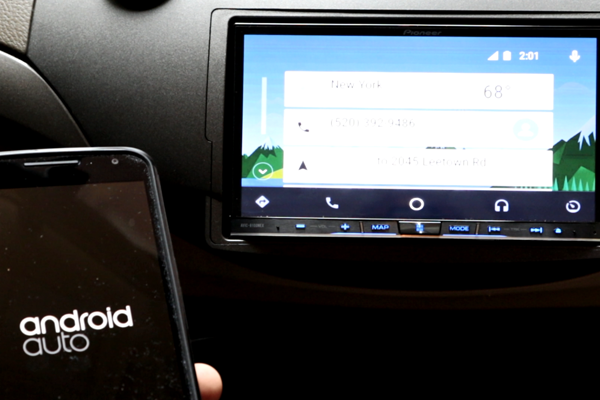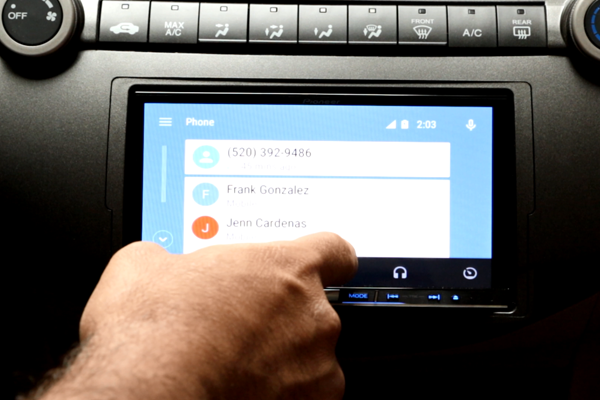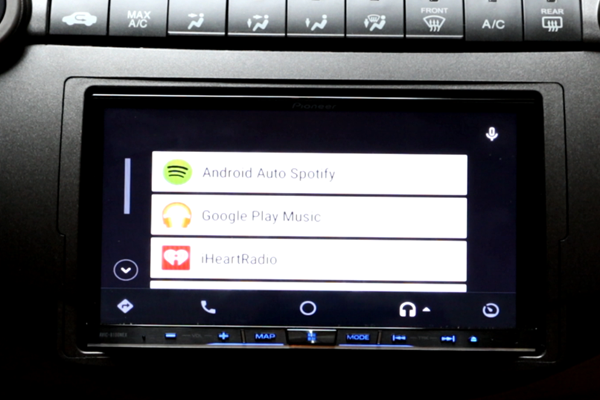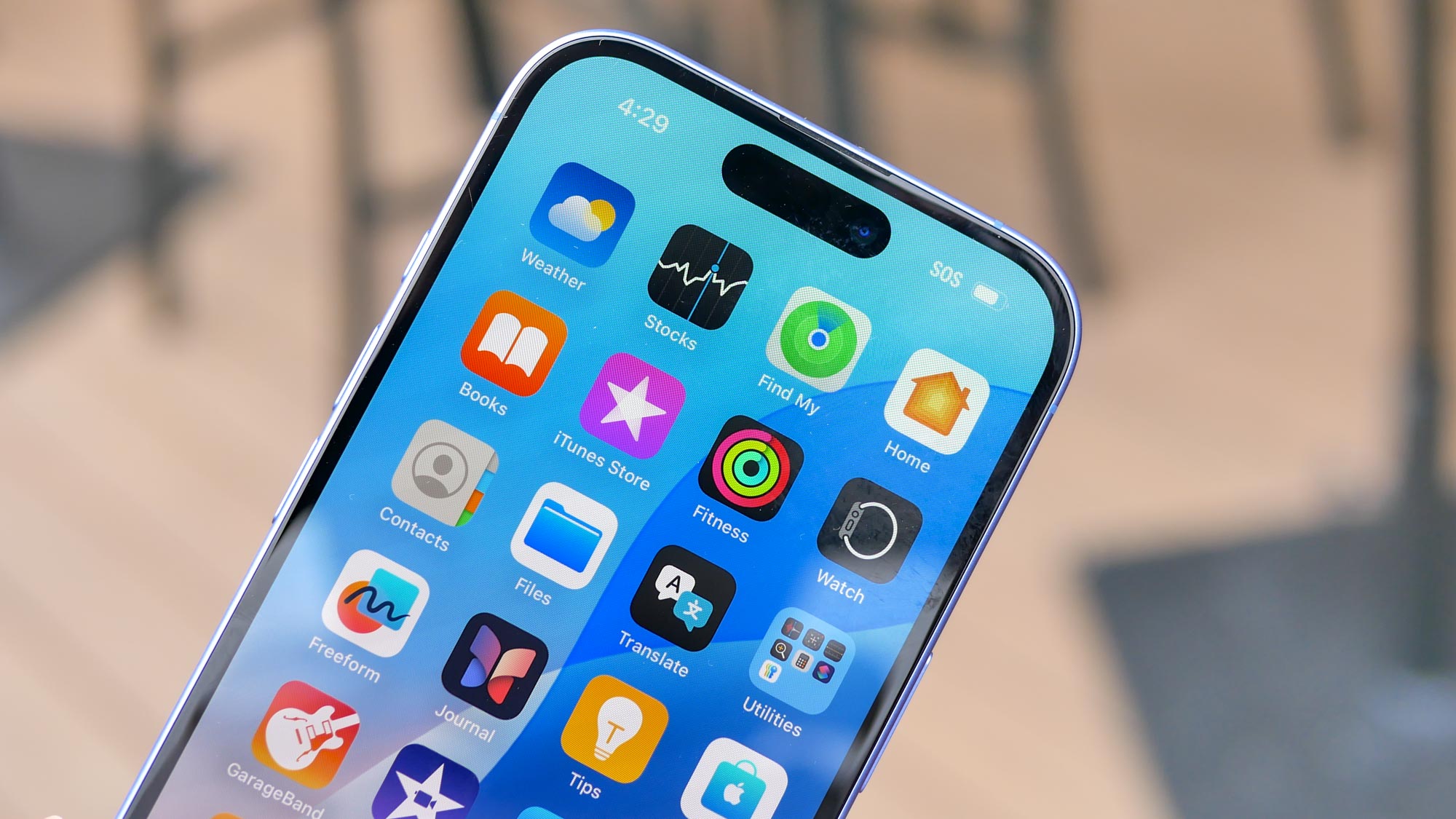Android Auto Test Drive: Meet Pioneer's In-Dash Unit
We test drive Android Auto on the streets of NYC with Pioneer's AVIC-8100 NEX in-dash receiver.
Android Auto is rolling out, and it's coming to major auto makers such as Acura, Chevy, Honda and more later this year. But you don't have to wait to get directions, voice actions, music, apps and more behind the wheel. You can outfit your vehicle now with Pioneer's NEX line of in-dash receivers.
To see how Android Auto performs in the real world, we took Pioneer's top-of-the-line $1,400 AVIC-8100 NEX receiver out for a spin in NYC. Note that Pioneer’s NEX line stars at $700, including three models supporting both Android Auto and Apple CarPlay, and two models that are CarPlay-only units.
Android Auto brings the mobile OS you know and love from your smartphone and onto the dashboard of your car. This lets you send texts, make calls, get turn-by-turn navigation and find points of interest without needing to learn a completely new system.
MORE: Android Auto FAQ: Everything You Need to Know
What you need is a phone running Android Lollipop (5.0 or higher), the Android Auto app (available for free from the Play Store), and a compatible head unit such as Pioneer's NEX receivers.
Equipped with all the essentials, it was time to finally get going.

Starting Android Auto is as simple as plugging your phone into the micro USB cable attached to the receiver. From there, Pioneer’s launches directly into a familiar-looking home screen complete with minimalist Android buttons, and non-skeuomorphic material design. Unfortunately, there's no wireless syncing option, for Android Auto or CarPlay, although the cord means that your phone will be getting charged at the same time.
You can navigate around the menu using the 7-inch touchscreen (a minimum screen size mandated for Android Auto by Google), or hit the microphone button in the top right to activate the Google Now-powered voice controls. The touch controls were as responsive as anything you'd find on a modern smartphone. The voice controls worked with natural language queries, without syntax heavy commands or language.

This comes into play the most when sending and receiving text messages, which never actually appear on the screen in order to prevent distractions. Instead, after receiving a notification, you can choose to have the Google voice read the message back, and transcribe your reply if you choose to respond.
If you forget to bring your phone, you’ll still have access to things like satellite radio, climate control (which Android Auto doesn’t touch), and media such as CD’s or MP3s.

You can also switch over to Apple CarPlay by disconnecting the microUSB cord and attaching an iPhone running iOS 8 or higher via a lightning cable and hitting a couple buttons on the touchscreen.
It’s about time cars took some cues from the computers in our pockets, and with Android Auto and CarPlay available from receivers like the AVIC-8100 NEX, you can get this tech in your life without needing to buy a new car.
More Car Tech Coverage from Tom's Guide
- The Best Cars from the New York Auto Show
- Connected Cars: A Guide to New Vehicle Technology
- These Are the World's Most Hackable Cars
Sam Rutherford is a staff writer at Tom's Guide. Follow him@SamRutherford onTwitter, andTom's Guide onTwitter,Facebook andGoogle+.
Sign up to get the BEST of Tom's Guide direct to your inbox.
Get instant access to breaking news, the hottest reviews, great deals and helpful tips.
Sam is a Senior Writer at Engadget and previously worked at Gizmodo as a Senior Reporter. Before that, he worked at Tom's Guide and Laptop Mag as a Staff Writer and Senior Product Review Analyst, overseeing benchmarks and testing for countless product reviews. He was also an archery instructor and a penguin trainer too (really).
-
Oldbutstillatit $1400? $700 for the base model? No thanks, I'll ducktape a fancy laptop to my dash and call it a day.Reply -
vulcangrey I have the Pioneer Appradio2 in my car. The firmware hasn't been updated in several years... There are some pretty big user interface issues, such as the track selection buttons moving around in various modes.. They move based on whether you are using the ipod player, or using the ipod music while viewing the GPS screen (using theaudio mixing) for instance. Hard to find on a touch screen while driving... Things like that should always be located in the same place!Reply
The bluetoth connection to my phone failed the day my phone received Android 5.0.2. months ago, still doesn't work. they haven't fixed that. It either fails to connect, or if you can get it to connect, then it will not a 2nd time, without deleting the android pair. If you do get it connected, then it won't transfer the phone calls, or the phone book from the phone.
Pioneer should learn to support a product before developing a new one! -
SJKIT I got the AVIC-8100NEX on Amazon.com for ~$900 and installed it in a 2011 GMC Acadia. I was immediately impressed, and very happy with this head unit. I had no previous knowledge of the commands, but Android Auto did what I asked, very quickly. This unit is solid, both with the built in apps and the Android Auto compatibility.Reply -
plasmastorm I'll be sticking with my £70 refurb Nexus 7 tablet that fits perfectly into my double din hole in the dash.Reply
Been running just fine for 18 months.
$700, what a joke. -
owens The interface looks really dumbed down. For a $700 unit I would expect it to have a bit more functionality and accessibility to all my apps.Reply
Think I will stick to the Nexus 7 tablet install. -
ddpruitt Why does the article say "test drive" when all it has are instructions on plugging in your phone and the stuff that's on the box?Reply -
zodiacfml ReplyI'll be sticking with my £70 refurb Nexus 7 tablet that fits perfectly into my double din hole in the dash.
Been running just fine for 18 months.
$700, what a joke.
I agree, just by the price and the images. I immediately thought to myself, why not just a device that mirrors what is displayed on the phone through USB or Bluetooth. We don't want another device to maintain.
Add all the amplifiers they want and still produce a high quality in dash unit for less than half of the price. -
hpram99 This is something I've been dying to see, I've been following carputers for a decade now. However... this requires Android, and not just that, Lollipop. The iPhone requirements are just as unrealistic. Smartphones still only account for half of the mobile phone market!Reply
